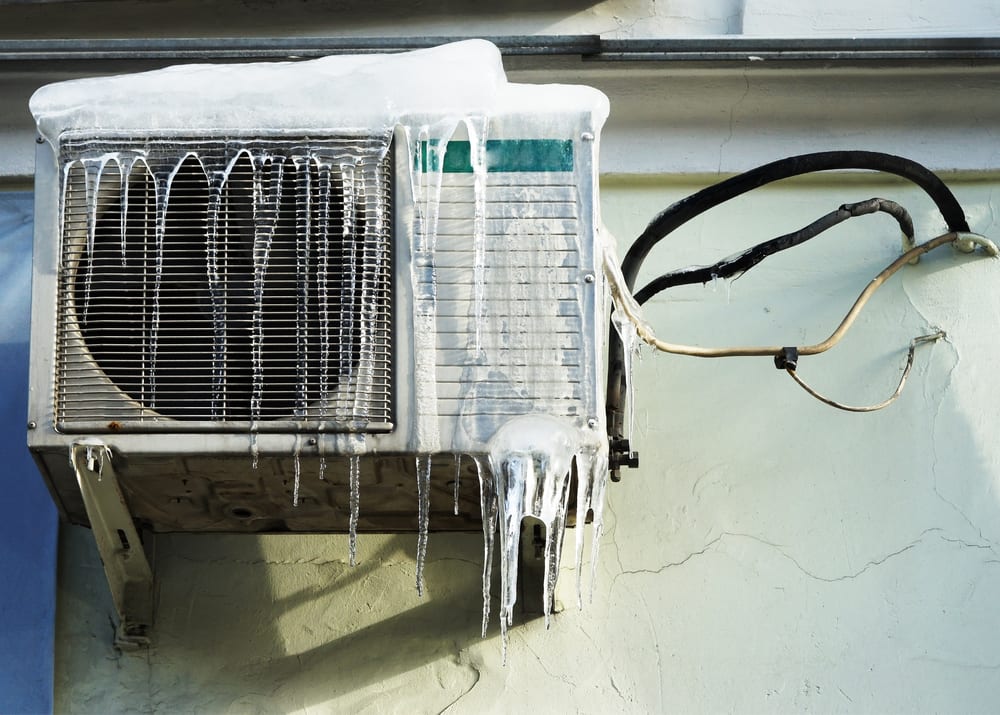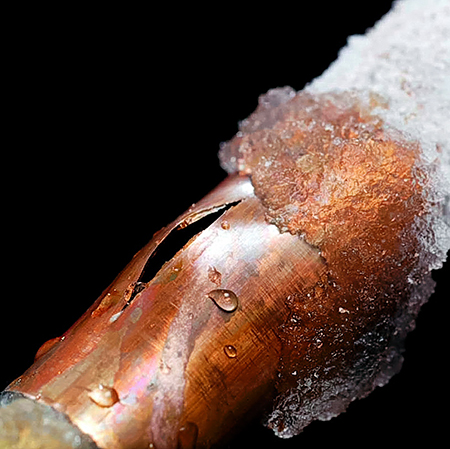Frozen AC Pipe - Reasons and Ways to Fix the Problem
Frozen AC Pipe - Reasons and Ways to Fix the Problem
Blog Article
We've noticed this article on Why Is Ice On My Outside Air Conditione directly below on the web and figured it made perfect sense to talk about it with you on this page.

Introduction
Finding that your AC pipe is iced up can be concerning, particularly during hot summer months when you depend on your air conditioning unit the most. Recognizing what to do in such a scenario is critical to avoid further damages to your air conditioning system and ensure your convenience indoors.
Understanding the Causes
A number of factors can add to the cold of an air conditioner pipe. Understanding these causes can aid you resolve the concern efficiently.
Lack of Airflow
One common root cause of an icy a/c pipeline is inadequate air movement. When the air movement over the evaporator coil is limited, it can trigger the coil to drop below freezing temperature, leading to ice formation on the pipeline.
Low Refrigerant Levels
Insufficient cooling agent degrees in your a/c system can additionally lead to an icy pipe. Low refrigerant degrees can trigger the stress in the system to drop, leading to the cold of dampness on the evaporator coil.
Cold Weather Conditions
In chillier environments, freezing temperatures outside can add to the cold of AC pipelines. If your AC device is not appropriately insulated or if there are leakages in the ductwork, cool air can infiltrate the system, creating the pipe to freeze.
Dirty Air Filters
Unclean or clogged air filters can restrict airflow in your a/c system, leading to various problems, including a frozen pipe. It's vital to change or cleanse your air filterings system frequently to guarantee appropriate airflow and prevent ice buildup.
Signs of a Frozen A/c Pipe
Acknowledging the signs of a frozen air conditioner pipeline is important for timely action.
Lowered Airflow
If you see a considerable decrease in air movement from your vents, it might indicate a frozen pipeline.
Ice Buildup on the Pipe
Visible ice accumulation on the refrigerant line or the evaporator coil is a clear indication of an icy AC pipe.
Strange Sounds from the Unit
Uncommon audios, such as hissing or gurgling, coming from your a/c system can indicate that there's ice existing on the pipe.
Immediate Actions to Take
When confronted with a frozen AC pipe, it's important to act promptly to prevent additional damage to your cooling system.
Shutting off the air conditioner
The first step is to switch off your ac unit to stop the system from running and exacerbating the issue.
Checking for Blockages
Examine the area around the indoor unit for any obstructions that might be blocking airflow, such as furniture or drapes.
Defrosting the Pipe
You can utilize gentle methods like placing towels soaked in cozy water around the frozen pipeline to assist thaw it slowly.
Safety nets
Taking safety nets can assist avoid future incidents of an icy a/c pipeline.
When DIY Methods Fail
If your attempts to thaw the pipeline or address other problems are not successful, it's time to employ a specialist.
Importance of Hiring a Professional HVAC Technician
A qualified HVAC service technician has the expertise and devices needed to detect and fix issues with your air conditioning system safely and properly.
Routine Maintenance Checks
Set up regular upkeep checks with a specialist HVAC service technician to guarantee that your air conditioning system is running successfully.
Transforming Air Filters
Routinely change or cleanse your air filters to stop air movement restrictions and preserve optimum performance.
Insulating Exposed Pipes
If your AC pipes are revealed to chilly temperatures, take into consideration protecting them to stop freezing throughout cold weather.
Looking For Professional Help
If DIY methods stop working to deal with the concern or if you're uncertain concerning how to proceed, it's ideal to look for assistance from a qualified HVAC service technician.
Verdict
Taking care of a frozen air conditioning pipe can be a frustrating experience, yet recognizing exactly how to react can help decrease damages and restore comfort to your home. By recognizing the reasons, recognizing the indications, and taking punctual action, you can successfully attend to the issue and protect against future incidents.
What to Do If Your AC Line Is Frozen
Make Sure All Supply and Return Air Vents Are Open
If you notice problems with airflow, the first thing you should do is check your supply and return vents. Supply vents distribute clean, conditioned air throughout your home. As this air becomes stale, it’s pulled into the return vent, where it’s reconditioned before being sent back out through the supply vent.
When these vents are closed, air won’t flow in the home. Before examining your AC, check the vents in every room and ensure they’re all open.
Check for a Dirty Air Filter
Another possible cause of limited airflow is a dirty air filter. Your air conditioner’s filters catch elements you don’t want to breathe in, such as dirt and dust. Over time, filters can become clogged, ultimately blocking air from flowing in and out. The lack of airflow can then cause the entire coil to freeze and will completely restrict any air from moving through it. The AC may need to be powered off for one to two days to allow the coil to thaw after replacing the filter to allow proper functioning of the unit. This debris can also accumulate on your AC’s evaporator coil, requiring a more serious repair. In general, air filters should be cleaned regularly (about every two weeks).
Assess Your Outdoor Unit
In addition to checking your AC, assessing the outdoor unit is a good idea. Also known as the condensing unit, it works with your interior unit to release heat outside. An issue with the outdoor unit can result in rising internal temperatures.
Overgrown Shrubs or Clogged Leaves
From leaves and twigs to shrubs and debris, there’s no shortage of outdoor elements that can accumulate around your condensing unit. When these elements get lodged inside the unit, they can block airflow. Fortunately, removing the blockage can solve the problem.
Sounds of a Broken Fan
Shrubs and leaves aren’t the only things that can impede your outdoor unit’s airflow. If the fan is broken, the unit won’t be able to properly get rid of heat — which means the internal temperature won’t go down. First, make sure the fan is spinning. If it is, check for the following sounds of a broken fan:
Buzzing Rattling Screeching Hissing Clicking Preventative Measures
Nobody wants to deal with a frozen AC line. In addition to causing problems with your air conditioner, they require professional repairs. On the bright side, there are preventative measures you can take to help ensure this issue doesn’t arise in the first place.
https://www.coopergreenteam.com/blog/what-to-do-if-ac-line-frozen

I'm very serious about What Do I Do If My AC Pipe Is Frozen and I'm hoping you appreciated the new blog posting. Loved our article? Please share it. Help someone else find it. I am grateful for your time. Kindly visit our blog back soon.
Estimate Report this page